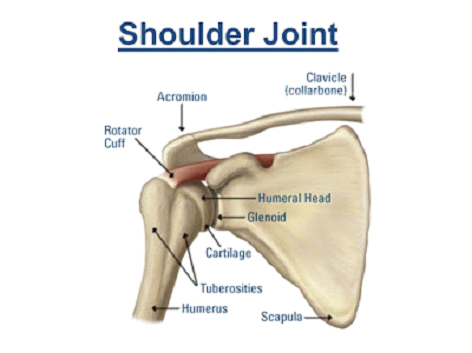Save 25% On Your First Autoship Order
Save 25% On Your First Autoship Order
Introduction | Types of Shoulder Injuries | Rehab
Recovering from an injury can be frustrating and quite the endeavor. Shoulder injuries are notorious for being a tough recovery and rehabilitation. With such a complex joint, rehabbing a shoulder injury can be painful and take time. This is not the type of rehab you want to rush or do in a slapdash manner. It would be great if there were exercises and medical aids that could expedite the healing method and rehab program. We here at HPFY can give you some guidance on recovering from your shoulder injury.

I am sure just about everyone has felt a twinge or pain in the shoulder. Sadly, there are a number of ways that we can injure our shoulder. Whether it involves the rotator cuff or collarbone, these injuries can be painful. Trust me, surfing on a toboggan is a great way to injure your shoulder joint (I know this firsthand). Just the actions of throwing a baseball or mowing the lawn requires our shoulders to, well shoulder the load. Common injuries to the shoulder joint include:
Once you have healed from your specific type of injury, rehabilitation can now begin. Your type of rehab program will depend on your type of injury and the area that needs to be rehabbed or strengthened. You should always consult your doctor or orthopedic surgeon before starting any type of rehab program. Your doctor/surgeon may even prescribe physical therapy. Common methods for recovering from a shoulder injury include:
If you shoulder injury is more severe, your doctor or orthopedic surgeon may suggest cortisone or steroid injections. The more serious your injury is more drastic the recovery and rehabilitation may be. Surgery for tendon repairs or even shoulder joint replacement may be the last resort.
A shoulder injury is nothing to sneeze at. They can be painful and present a difficult rehabilitation and recovery. Your recovery program should always try the most conservative methods first before progressing to more invasive options. As always, consult your physician or orthopedic surgeon before deciding on your recovery plan. Remember, slow and steady wins the race, so don’t rush anything or you may risk setbacks that make your recovery time longer.
Disclaimer: All content found on our website, including images, videos, infographics and text were created solely for informational purposes. Our content should never be used for the purpose of diagnosis or treatment of any medical conditions. Content shared on our websites is not meant to be used as a substitute for advice from a certified medical professional. Reliance on the information provided on our website as a basis for patient treatment is solely at your own risk. We urge all our customers to always consult a physician or a certified medical professional before trying or using a new medical product.

Kevin Cleary has been a Health Products For You contributor for many years and has a degree in marketing. His health and wellness journey has a very personal meaning and has guided him in his content writing for HPFY.
In 2006, ...
How To Increase Iron Levels Quickly
It’s a question that must have puzzled you like many others. Iron is essential in hemoglobin production and its inadequate levels can negatively impact your health. Dive into this informative article to explore top iron-rich foods that can help you fight iron deficiency.
10 Best Coccyx Cushions for Tailbone Pain
If you're like most people, you spend about 8 to 10 hours sitting every day. However unhealthy, it is part of life for many, and can cause tailbone pain. Coccyx cushions can help alleviate this pain. Click to read more and find the perfect coccyx cushion for your tailbone pain.
5+ Best Adult Diapers for Fecal Incontinence
Dealing with fecal incontinence can be challenging, but you're not alone. Read this article and navigate through discreet and effective solutions that help you manage fecal incontinence and let you live life on your terms with confidence and comfort.
Top 5 Best Reviewed Nebulizers of 2024
Need an effective and affordable nebulizer? Look no further, in this article we offer 5 of our best reviewed nebulizers that are loved by our customers. Click to read more and find the perfect nebulizer for all your respiratory needs.
10 Best Penis Pumps For Erectile Dysfunction
For anyone dealing with erectile dysfunction, penis pumps serve as a great way to manage it. But with so many products available, determining the best one for your needs can be challenging. To assist you in refining your choices and making an informed decision, here are our top 10 options, recognized for their effectiveness and safety.